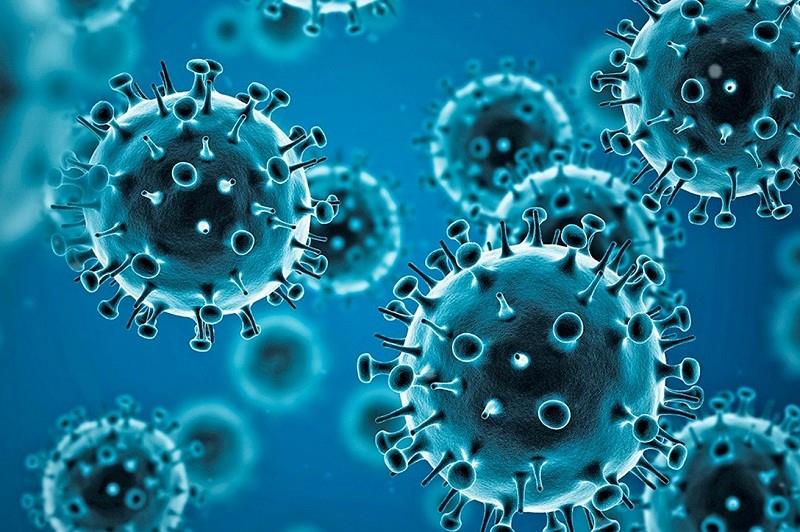
UPDATE – DEC. 13, 2021 3:50 PM MST: A few hours after publication of this article, the New Mexico Department of Health (NMDOH) reported the first confirmed case of the Omicron variant in the state. A woman from Bernalillo County tested positive and is recovering at home. She had previously visited a state where the Omicron variant was present, though the NMDOH did not specify which.
New Mexico is bracing for the arrival of the Omicron variant of COVID-19. Omicron was first reported in South Africa on November 24, and a little more than a week later by December 3, WHO (the World Health Organization) reported that the Omicron variant had already spread to more than 38 countries worldwide, including the United States.
New Mexico has yet to report its first case of Omicron, although the first case of the variant has been confirmed in Texas. It is only a question of time until Omicron rears it ugly head in New Mexico, stretching into Lea County.
The Texas Case
Little is yet known about the Omicron variant, but the speed by which it spreads is causing considerable concern among health professionals everywhere. Their analysis is that the Omicron variant is far more contagious than the disease’s other forms.
As an example, the Omicron case in Texas is especially troubling, as the woman diagnosed with Omicron resides in Harris County and has not traveled outside her area. Further, she is fully vaccinated. Fortunately, her symptoms are not severe and she has not so far required hospitalization. The conclusion is that she likely contracted the variant from someone in her area.
Early analysis suggests that like with other variants, vaccines are effective at preventing serious symptoms, but only slightly reduce potential spread. Health experts are strongly advising precautions such as wearing masks and socially distancing.
However, the absolute answers to Omicron questions are still unknown as more data is needed across the board.
More Contagious?
All variants of coronavirus possess unique signatures. The Delta variant, which is still the disease’s most prevalent variant in the United States, not only proved to be more transmissible than previous variants but also caused more severe illness.
At present most hospitalizations in the United States are from unvaccinated individuals who have contracted the Delta variant, and many hospitals are overwhelmed. Health experts agree that vaccines provide the strongest defense against the Delta variant. For the most part vaccinated individuals if infected do not require hospitalization.
But what about Omicron? The truth of the matter is that much remains a mystery. Evidence, however, suggests that Omicron is more transmissible than Delta and other variants and that it is able to reinfect people more easily than previous variants.
The Omicron variant rapidly became the dominant variant in South Africa, spreading more than twice as quickly as Delta. Only a few days after Omicron appeared, scientists reported a dramatic rise in coronavirus cases among people who had previously been infected. These same scientists confirmed that such an upswing did not occur with the Beta and Delta variants. Final confirmation of these findings is awaiting peer-review and publishing in a scientific journal.
Research also suggests that Omicron may be better able to avoid the body’s immune defenses than other forms of the virus. That being said vaccines have provided strengthened immune responses resulting in fewer hospitalizations. Be aware, however, that vaccines are no guarantee against contracting coronavirus. Health officials and public officials urge everyone to get vaccinated and observe the COVID protocols.
Severity of Infections
There are some early indications that Omicron may cause less severe illness. However this optimistic view is centered on a small study that only included cases among younger people in South Africa. The concern is that the study evaluated a group of individuals who are less likely overall to become severely ill from COVID in any event.
The WHO cautions about current speculation about the severity of the Omicron variant and its transmissibility. Right now it is important to follow all protocols and not allow wishful thinking to guide our decision making.
According to the WHO, the concept that the Omicron variant is less deadly than the Delta variant is a bit premature. The organization states, “There is currently no information to suggest that symptoms associated with Omicron are different from those from other variants. Initial reported infections were among university students—younger individuals who tend to have more mild disease—but understanding the level of severity of the Omicron variant will take days to several weeks. All variants of COVID-19, including the Delta variant that is dominant worldwide, can cause severe disease or death, in particular for the most vulnerable people, and thus prevention is always key.”
Vaccine Efficacy
To date, studies suggest that a third jab of the Pfizer COVID-19 vaccine offers significant protection against the Omicron variant. Only two doses show significantly reduced effectiveness, according to a preliminary study. Pfizer reported in a statement on Tuesday, December 7 that “a third booster dose of the vaccine resulted in a 25-fold increase in the neutralizing antibodies that attack the virus, compared with the original strain of the virus detected in China.”
“Although two doses of the vaccine may still offer protection against severe disease caused by the Omicron strain, it’s clear from these preliminary data that protection is maximized with a third dose of our vaccine,” said Albert Bourla, Pfizer’s chairman and chief executive officer.
“With the data coming from the Omicron variant it is very clear our vaccine for the Omicron variant should be a three-dose vaccine,” stated Ugur Sahin, chief executive of BioNTech.
New Mexico’s Preparations for the Omicron Arrival
Although the Omicron variant has yet to appear in New Mexico, the problems from the Delta variant are creating nightmares as the state continues to see a massive surge in COVID-19 case numbers. As of December 8, the New Mexico Department of Health (NMDOH) reported 1,444 new cases. The state’s total number now stands at 326,713; deaths total 5,445.
Acting Secretary of the NMDOH Dr. David Scrase sees the current situation as a great challenge to New Mexico hospitals. He stated at a December 8 news conference after noting that the strong uptick in cases is causing even more frustrations for hospitals throughout the region, “We continue in ‘crisis standards of care.’ The hospital situation is not getting a lot better. A very, very small number of ICU beds are available.”
Dr. Scrase expressed his concern more specifically when he referred to two hospitals in Albuquerque that are experiencing emergency room overcrowding. He said that when so many people are in emergency rooms waiting for hospital beds, “you’re not able to see people in the emergency room who come in with emergencies and the system just almost grinds to a halt.”
At the same news conference Dr. Christine Ross, NMDOH state epidemiologist, indicated that the department of health is closely working with the Centers for Disease Control (CDC) to determine what restrictions may in the future become necessary, adding that state health officials are doing everything they can to learn more about the Omicron variant to better prepare for what is to come.
Right now the state is dealing with the highest number of hospitalizations it has seen in almost a year. As of Wednesday 687 people were being treated in hospitals throughout the state. What the future will bring is anyone’s guess, but science is suggesting that things may get worse before they get better.
What about Lea County?
In general, the county is still plagued with COVID-19 and it appears that all cases are of the Delta variant. According to a New York Times report dated Saturday, December 11, Lea County cases “have increased recently and are very high.” Hospitalizations and deaths have remained about at the same level as before. Test positivity rate is high, “suggesting that cases are being significantly undercounted.”
Because Lea County has particularly low levels of vaccination, the area is highly susceptible to Omicron and other potential variants.
Health and government officials are calling on everyone to err on the side of caution. Get vaccinated. Follow all protocols –wear masks, wash hands regularly, social distance – take all precautions available to protect yourself and others from contracting this serious, contagious and deadly disease.


